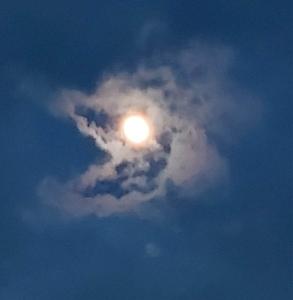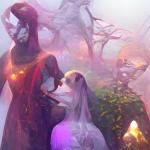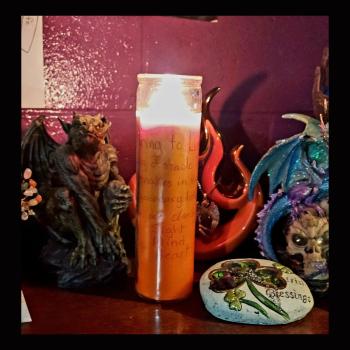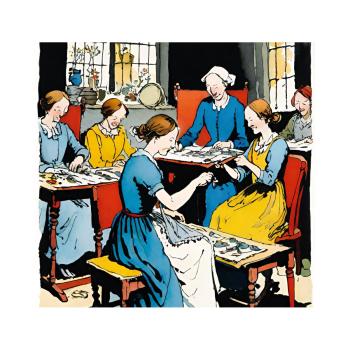The history of the snake as a spiritual symbol is one of the oldest. In Egyptian culture is was seen as a symbol of royalty, divinity, protection, and in some cases immortality. For the Aztec, the serpent was a representation of the mother earth herself. The Ojibwa, a Native American tribe, saw them as a sign of fertility and new life. The Norse and Germanic tribes had a different view though…
The Snake in Norse Mythology
There are many snakes in Norse mythology. Some depicted as the serpent we think of today, and others that were more dragon like by comparison. Each one having their own story, yet speculated to all be interconnected aspects of one. This isn’t uncommon in animistic terms, and for me it makes sense.
For every living species I believe there is a core pattern they are all connected to and a part of. All snakes thus would be a part of this massive snake pattern, yet as individuals, they would each be like a projection of that core pattern. To help you visualize it, think of the large pattern like a spider web, and the smaller ones like the connecting points. Thus each their own yet all interconnected and representative of the whole.
There are two snakes in Norse mythology that are important when it comes to the art of Seidr.

Nidhoggr
Nidhoggr is an interesting character. There are two places he is said to be found.
The first is at the bottom of the World Tree, around the well of Hvergelmir, which leads to Niflheim (also called Helheim), the Norse Underworld. This is where he is said to be gnawing at the root of Yggdrasil, trying to bring it down and cause chaos within the realms.
The second is in Nastrond (Corpse Shore) where Nidhoggr tears apart and feeds upon the worst of people, such as murderers. Some tales have equated it to a specific Hall in Niflheim where snakes drip venom from the ceiling and walls and Nidhoggr sits atop of it.
Either and both stories could be true depending on the perspective, but we will get there.
Jormungandr
The Midgard serpent, or the serpent that is wrapped around the world holding all within.
Jormungandr is probably the most well known of the serpents due to the story of Ragnarok – the Norse depiction of the end of days. In the story, Jormungandr will release his tail and create chaos upon the earth – things such as earthquakes and tidal waves.
It is the opinion of some that Jormungandr represents the main archetype of the serpent and that all others are a form of him. Again, this could be seen from certain perspectives.
In my experience Jormungandr is the wall around the land of the dead. Nidhoggr allows you onto the path to that land, but Jormungandr is the last hurdle before entering.
Symbolism of the Snake
In both of the cases above, the ultimate representation of the snake is that of a boundary. The boundary between one world and another. It is a creature that can move between the worlds and be of the worlds but belong to none of them.
“They possessed dark, underground powers, but they also had a protective role. We could also speculate that snakes have the ability to transform themselves, thus being able to cross boundaries between living and the dead. They live in different environments, on the surface and below ground, on land and in water.” – Dr Leszek Gardela, Senior Researcher at the Museum of Denmark
In Seidr this is an important concept. As the whole practice around Seidr deals with the land of spirit. Not always the dead, but also not the physical world we live in.
The staff, as noted in a previous article, is a representation of the snake. Both the animal a Seidkona can shape-shift into when crossing into the spiritual realm, or the guide that shows the Seidkona the way.
Thinking upon the actual serpents of the stories though and my own experience, they are more like gatekeepers. They do guide and help along the way, but they guard the places of the dead. Is it protecting the dead from the living or the living from the dead? That could be a debate in itself.

Modern Seidr
We have very little written information on the actual practices of Seidr in pre-christan times. Much of what we have today has been constructed from scholarly works, archaeology/ anthropology theories, and modern practitioners who have learned through experimentation and connection to their guides.
So in essence, there is no one way of Seidr that someone can claim to be “the practice.” Instead it is modern practitioners sharing what they have learned personally, both through study and through actual practice. Much of Pagan and older magical traditions are this way. There are certain things we can all agree upon, such as the tools of Seidr (the seat, staff, and song), but their specific representations can hold some different perspectives.
My knowledge comes from research – listening and talking to other practitioners – instructions and understandings given to me by my Guides – and a lot of experimentation.
For me the snake is represented in the staff. Not something that grounds my physical body and tethers my spirit as it walks (that is the seat in my practice), but the spirit of the snake guiding me as I walk.
It is the spirit that guards the boundaries between planes. Protecting but also allowing passage between.
How do you see the snake?
What does it represent in your practices, traditions, or culture?

Below are additional resources on snakes within Norse context and Seidr:
Dr Leszek Gardela, Senior researcher at the museum of Denmark (https://natmus.academia.edu/LeszekGardela) – Uncoiling the serpent: snake figurines in the viking age
Sami and snake staffs/ art
http://benedante.blogspot.com/2021/06/a-shamans-snake-staff-from-neolithic.html
Sami and power animals
http://jultika.oulu.fi/files/nbnfi-fe2021060936012.pdf
Shamans of the Kalevala: a Cultural Analysis
https://www.laits.utexas.edu/sami/diehtu/siida/shaman/kalev.htm
Scandinavian Center for Shamanic Studies
https://www.shamanism.dk/article-legacy-of-seidr


















